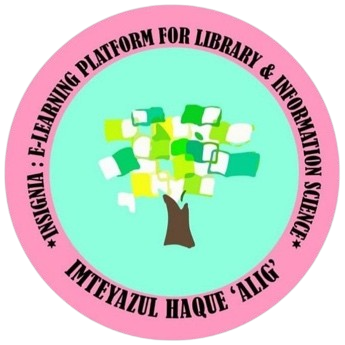Prepare by asking yourself many questions as possible, like “What is a library, its functions, the role of a library etc.” This will help clarify your concepts.
Matlab: sabse pehle aap khud se sawal kare basics se bilkul jaise library kya hai eske features, functions, etc. jaise jaise sawal ye sab ayega apke mind me waise aur v sawal ayenge ye bhi ek tarika hai tyaari karne ka aur sabko ek diary me likhiye
Secondly, review your BLIS and MLIS syllabus, identify any unclear topics, and focus on mastering them. For example, if management is a topic, narrow it down to its specific sub-topic e.g., Library Management Functions, HRM, Budgeting etc. Similarly, for IT, break it down into sub-topics like hardware (e.g., servers, computers, networking equipment) and software (e.g., library management systems, digital resource tools). By this way, you’ll be better equipped to grasp key concepts.
Matlab: Dusra, Aap blib and mlib ke syllabus ko ache se padhiye, Blib ke syllabus dekhiye aur usme ek ek subject ko ache se padhiye aur notes banaiye phir mlib ko bhi aise kijiye. Aise bhi aap tyari kar sakte hai interview ki aur aise apko knowledge bhi bahut hoga. Jaise: Management hai toh esme apko Management kya hota eske principles, phir HRM, phir budgeting phir reporting etc. aise hi aap IT le lijiye esme v apko Hardware, softwares, open source, types of software, library softwares etc. aur notes zrur banaye
Lastly, research the institution you’re interviewing with. If it’s a technical institute like IIT, be familiar with their software, databases, and indexing services etc. Tailor your preparation to the specific institution to make a strong impression.
Matlab: Aap kahi bhi jaye toh uske institute ke baare me padhe zrur. Jaise IITs me ja rahe toh uske websites ko dekhe unke databases, software konsa wo use karte aur services kya kya hai etc.
NOTE: Interviews are never pre-planned, and you won’t know all the questions in advance. What matters most is how you answer, your communication, and body language, Please note that the questions provided here are intended solely to give you a general idea and help you prepare for the interview.
Matlab: Hamesha yaad rakhiye, Interview kabhi bhi pehle se decide nhi hota ki ye sawal puchna hai ya hona hai aap kya bolte hai kaise bolte hai ye matter karta hai, aap sabkuch padh ke jaiye kuch bhi sawal ho sakta hai. Baqi maine apko ek idea diya hai aise tyaari kare Interview ki Umeed hai acha hoga sabhi ka aur aapko mehnat karni hogi interview ke liye bhi or knowledge ke liye bhi.
How to Crack a College Librarian Interview (Degree Colleges & State Service Commissions)
If you’re applying for a college librarian position in degree colleges or through state service commissions like UPPSC, MPPSC, RPSC, etc you need to demonstrate expertise in library science, digital resources, research support, and technology integration. Here’s how you can prepare:
Step 1: Understand the Role of a College Librarian
A college librarian is not just responsible for managing books but also plays a crucial role in supporting research, teaching, and institutional development.
Key Responsibilities:
- Supporting Research & Teaching – Helping faculty and students find academic resources.
- Digital Library Management – Managing platforms like DSpace, Shodhganga, e-Granthalaya for digital access.
- Assisting in NAAC Accreditation – Keeping records and statistics for institutional rankings.
- Teaching Information Literacy – Training students in citation styles, plagiarism prevention, and open access resources.
Step 2: Library Science Topics
To perform well in the interview, you need in-depth knowledge of core library science topics, including:
Classification & Cataloging – Know DDC (Dewey Decimal Classification), UDC (Universal Decimal Classification), CC LCC (Library of Congress Classification), AACR2 (Anglo-American Cataloging Rules), and RDA (Resource Description & Access), MARC.
Library Automation – Be familiar with KOHA, SOUL, and e-Granthalaya etc for automated cataloging and circulation.
Institutional Repositories – Understand how repositories like DSpace, EPrints, and Shodhganga etc work for archiving research.
Open Access & Research Tools – Tools like DOAJ (Directory of Open Access Journals), ResearchGate, and Google Scholar etc help students access free academic content.
Library Networking & Consortia – Know about INFLIBNET, DELNET, NDLI, and e-ShodhSindhu, etc which provide resource sharing & interlibrary loans.
Copyright & Plagiarism Issues – Be prepared to discuss Creative Commons licensing, Turnitin, Urkund, and UGC’s Regulations and policies for plagiarism,
Step 3: Common Interview Questions & Best Answers
Frequently Asked Questions & How to Answer Them
Tell us about yourself.
Keep it concise – Talk about your education, library science background, work experience, and passion for academic libraries.
How can a librarian support students and faculty?
Explain how you’ll assist in research, digital literacy training, and resource discovery.
What is the role of a library in NAAC Accreditation?
Describe how you’ll track library usage statistics, maintain digital repositories, and improve ICT-based learning.
How do you encourage students to use library resources?
Suggest orientation programs, subject-wise book exhibitions, and research workshops.
How do you integrate technology into the library?
Talk about e-books, OPAC (Online Public Access Catalog), RFID (Radio Frequency Identification), and digital research tools.
How do you handle copyright and plagiarism issues?
Mention Turnitin, Urkund, and Creative Commons licensing to promote ethical research practices.
How do you collaborate with faculty?
Offer custom reading lists, citation management tools, and research project support.
How are books purchased for the library? Please explain the method.
Books are purchased through a selection process based on curriculum needs, budget allocation, and order placement with publishers or distributors. After receipt, books are cataloged and made available to users.
What is the difference between print media and non-print media?
Print Media: Physical publications like books, newspapers, and magazines.
Non-Print Media: Digital or audio-visual content like e-books, websites, and videos.
Questions related to computer knowledge, specifically on MS Excel and MS Word.
MS Excel: Creating formulas, using PivotTables, formatting cells, and creating charts.
MS Word: Formatting text, inserting tables, headers, footers, and using templates.
Questions related to the SOUL software.
SOUL is used for cataloging, circulation, and generating reports in university libraries. It manages user records and library transactions.
Why do you want to work in a university library?
I want to contribute to academic excellence, help students and faculty with research, and grow professionally in a dynamic environment.
What are your salary expectations?
Where is the accession number stamp placed in a book?
The accession number is stamped on the title page or inside the front cover.
What details are written on the spine of a book?
call number, and shelf location (if applicable).
Step 4: Selection Process – What to Expect?
Most state service commission exams (UPPSC, MPPSC, RPSC, etc.) follow this pattern:
Written Exam – Includes Library Science, General Studies, Concern State GK, Computers, and Teaching Aptitude.
Interview – Panel evaluates subject knowledge, communication skills, and technical expertise.
Document Verification – Ensure you have valid NET/JRF, PhD/M.Lib.I.Sc. certificates.
Tip: Check previous years’ question papers to understand the exam pattern.
Read some important topics like –
- Information Technology: Library management softwares (SOUL, KOHA), digital libraries, e-resources management, ICT tools, and AI applications in Libraries, OPAC & Web OPAC, Barcoding, Web 1.0, Web 2.0, Web 3.0, Meta Data and its types, Databases, HTML, Creative Common, Operating systems, utility software, application software, Proprietary and Open source softwares, Web Servers, Web tools, Search Engines, ISDN, OCR, Image Editing Software, DOI, RFID, e-journals, Subject gateways, etc.
- Library Management – Management and its functions, POSDCORB, Library sections, budgeting, HRM, Quality management, Collection Development, Library Statistics, and Policy development to enhance library operations, Stock Verification- Policies and Procedures, weeding out, etc.
- Reference Services – Traditional and digital reference services, CAS, SDI, Documentary and Non-Documentary Sources types, Web based sources and services, All reference sources like Current sources, bibliographical sources, biographical sources, language sources, background sources, statistical sources, etc. National and international information systems and networks, etc.
- Library Classification: Main Classes, Common Isolates: Anteriorising and Posteriorising – Time isolates – Space isolates – Language isolates – Phase, Intra-facet and Intra-array relations – Schedules of special isolates – Devices: Subject, Geographical, chronological, Super-imposition and Alphabetical – Parallel Schedule Device, Summaries, Classaurus, Thesaurofacet, Indicator Digits, etc. Major Schemes of Classification: DDC, CC, UDC, Normative Principles of Classification, Mnemonics: Definition, types, Facet Sequence, Helpful Sequence, Book Number and collection Number and related terms, Library Classification: Trends, etc.
- Library Catalogue: Physical forms, CCC and AACR-II, RDA, Centralized and Cooperative Cataloguing, WORLDCAT, OCLC etc. Cataloguing Rules according to CCC and AACR-II, Cataloguing of Non-book Materials, etc.
- Research: Concept, types, objectives, Types of research and Research Methods, Research Design, Hypothesis, Sampling Techniques, Research Technique Tools (Questionnaire, Interview, Observation – Scales and Check lists), Research Reporting, Descriptive Statistics (Mean, Mode, Median) and Inferential Statistics (Correlation, T-test, Regression – linear and non-linear, Chi square test), Measures of Central Tendency and Measures of dispersion, SPSS, Bibliometrics, Scientometrics, Informetrics and Webometrics, Citation analysis, Bibliographic Coupling, Impact factor, etc.
- Miscellaneous – Citation styles, plagiarism detection, open access publishing, data management, and academic databases, Information Literacy, Consortium, Pre and Post Co-ordinate Indexing, Citation Indexing, Vocabulary Control, Thesaurus, Indexing and Abstracting Services, Data, Information, Knowledge, Information as an asset and Resource, Censorship, Copyright, Patents, Standards, Data security, Fair use, Knowledge Management, Knowledge Discovery Tools, POPSI, PRECIS, ISBD, MARC, CCF, ISBN, UNIMARC, MARC21, etc.
Final Tips for Success
Know UGC & NAAC Guidelines – Understand the role of libraries in higher education accreditation.
Understand General Financial Rules (GFR) – Essential for library budgets & procurement.
Stay Updated – Follow trends in digital libraries, AI-based tools, and research networks.
Be Confident – Speak clearly & support answers with practical examples.
Show Passion – Demonstrate how you’ll make the library a hub for learning and research.
Show them your enthusiasm, and you’ll stand out in your interview!
With best wishes,
Imteyazul Haque
INSIGNIA: E-LEARNING PLATFORM FOR LIBRARY AND INFORMATION SCIENCE

